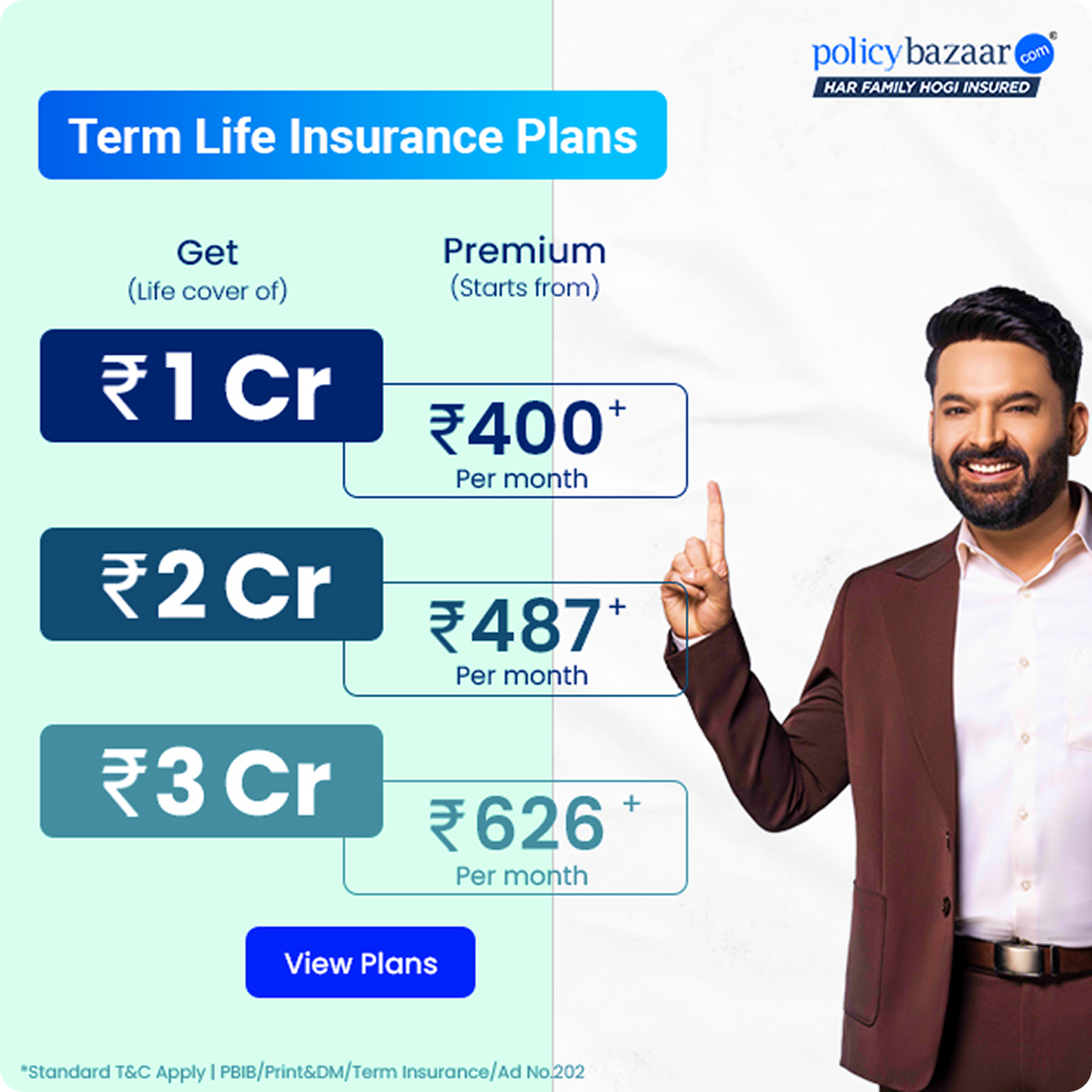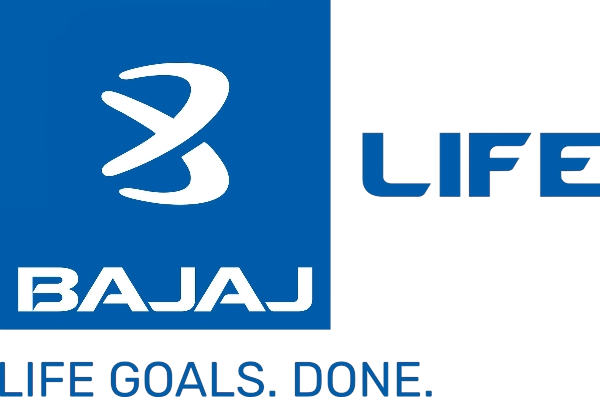HDFC Click to Protect Plus
HDFC Life Click 2 Protect Plus is an online term plan with a unique structure of benefits that are aimed at providing a tension-free future at affordable premium rates. This life insurance plan protects you and your loved ones from one or more uncertainties of life. You can choose from a wide range of cover options, keeping in mind your life insurance needs.

Its Income and Income Plus Options provide your dependents with the benefit of a monthly income.
HDFC Click to Protect Plus- Key Features
- Click To Protect Plus is a pure HDFC term insurance plan with Regular, Limited and Single pay premium paying options
- There are 4 cover options to choose from in the HDFC Click To Protect Plus plan:
- Life Option
- Extra Life Option
- Income Option
- Income Plus Option
HDFC Click to Protect Plus- Benefits
- Under HDFC Click To Protect Plus plan, on death, the benefit payable depends on the cover option chosen.
- Under the Life Option in HDFC Click To Protect Plus, the Sum Assured is paid on death
- Under the Extra Life Option in HDFC Click To Protect Plus, additional Sum Assured is paid in case of accidental death
- Under the Income Option in HDFC Click To Protect Plus, 10% of the Death Benefit is paid in lump sum on death. The remaining 90% is paid in equal monthly instalments over a period of 15 years post death.
- Under the Income Plus Option in HDFC Click To Protect Plus, the entire Death Benefit is paid on death. Additional payouts @ 0.5% of the SA is paid monthly over 10 years
- The additional payouts can be level payouts or increasing payouts increasing @10% p.a. in the HDFC Click To Protect Plus plan
- In HDFC Click To Protect Plus plan, the death benefit is higher of 125% of Single Premium or SA for Single premium plans or higher of 10 times annual premium or SA or 105% of all premiums paid till death
- Income tax benefit on the premium paid as per Section 80C and on the claims received as per Section 10(10D) of the Income Tax Act.
Product Specification of HDFC Click to Protect Plus
|
|
Minimum |
Maximum |
|
Entry Age (Last Birthday) |
18 years |
65 years |
|
Maturity Age (Last Birthday) |
- |
75 years |
|
Policy Term (PT) in years |
10 |
40 |
|
Premium Paying Term (PPT) in years |
Regular pay - Equal to policy term |
|
|
Premium Paying Frequency |
Annual, half-yearly, quarterly, monthly |
|
|
Yearly Premium |
3000 |
No limit |
|
Sum Assured |
25,00,000 |
No limit |
Details About Premium of HDFC Click to Protect Plus
Annual premium in Rupees for a SA of 50 lakhs under the HDFC Click To Protect Plus for a policy term and PPT of 20 years:
|
Age |
Life Option |
Extra Life Option |
Income Option |
Income Plus Option |
|
40 years |
7783 |
10,281 |
6538 |
10,508 |
|
50 years |
19,331 |
21,828 |
16,238 |
26,097 |
HDFC Click to Protect Plus- Policy Details
- Grace Period: 15 days grace period is allowed for payment of premium in monthly mode and 30 days in other modes in the HDFC Click To Protect Plus plan.
- Policy Termination or Surrender Benefit: the policyholder can surrender HDFC Click To Protect Plus plan and avail surrender value only in case of Single Premium policies.
- Surrender Value = 70% of Single Premium * (unexpired coverage term/original coverage term)
- Free Look Period: If you are not pleased with the coverage, and terms and conditions of HDFC Click To Protect Plus, you have the option of canceling the policy within 30 days of receipt of the policy documents, provided there has been no claim.
Additional Features or Riders of HDFC Click to Protect Plus
- Premium rates are lower for non-tobacco users under HDFC Click To Protect Plus plan
- With the Life Stage Protection feature, the Sum Assured can be increased on important milestones of one’s life like marriage and child birth in HDFC Click To Protect Plus.
- On marriage, 50% of the SA can be increased and on each child birth, 25% of the SA can be increased under HDFC Click To Protect Plus plan.
- In this HDFC life insurance plan, the additional coverage can be decreased after attaining 45 years which will subsequently lower future premiums
Exclusions
- In case of suicide committed within 12 months of policy inception or revival only 80% of premiums paid are returned to the nominee under HDFC Click To Protect Plus plan.
- In case of rider benefit opted for in HDFC Click To Protect Plus, death 6 months after the accident or accidental death due to intentional self-inflicted injury, alcohol abuse, war, aviation, acts of criminal nature or due to participating in hazardous activities is excluded.
Documents Required
Policyholder has to fill up an ‘Application form/ proposal form’ online and provide self-attested copies of KYC/AML Documents.
Term Plan – General Information to Buy the Perfect Term Policy
A term plan is the simplest and most basic insurance product. It is designed to cover only the risk of death. In the event of death of the policyholder, his or her family or nominee receives the sum assured (or the cover amount).
If the policyholder survives the policy term, he or she does not receive anything and loses the yearly premiums paid. The policy is closed with no returns or payout from the insurance company to the insured.
A term plan is the cheapest life insurance product because everything that one pays (entire premium amount) goes towards covering only the life of the insured. There are no investments or other benefits clubbed with a pure term insurance plan. They offer protection of insurance cover at extremely affordable prices. Term plans are the only life insurance product available in the pure insurance category.
Types of Term Insurance Plans
Though a term plan is a pure play life insurance policy that seeks to protect the dependents in case of demise of the breadwinner, people looking for a good term plan must know the distinction between the various types of term plans that are available in the market. This will help them make a wise decision when the choose the right term plan for themselves.
- Standard Term Life Insurance Plan: A standard term plan is the pure vanilla term plan without any frills. Under this plan, the insured has to pay a certain premium to get a life cover for a large sum assured. The sum assured is handed over to the nominees (family) in the unfortunate event of demise of the insured person.
- Term Return of Premium (TROP) Plan: This plan is similar to the term plan in all aspects save one – the premium paid by the policyholder is returned at the end of the policy tenure. The premium for these term plans is considerably more than the standard plan. Insurance companies may come up with various modes of payment such as limited period premium payment or whole tenure premium payment.
- 5,10, 15, 20 Year Term Plans: Unlike standard term policies that need to be renewed every year, these term plans are for a certain number of years such as 5, 8, 10, 12, 15, etc. The chief benefit of these policies is that the premium amount remains fixed throughout the period of the plan. The choice of the term plan you choose should depend upon your requirements and needs. The shorter term plans are ideal for people with immediate financial responsibilities that will affect the family members in case of their absence, while the longer plans are for people who want cessation of financial worries in the long term.
- Single Life and Joint Life Term Insurance Plans: The single life term plans only cover one person while the joint life policy covers the spouse also. The premium for the joint life cover is less than buying two single life term policies. The joint life plans may offer death benefit on first claim basis or both insured persons. In the former case, the policy terminates on the demise of any of the two joint lives insured, while in the latter case, benefit accrues for both persons.
- Convertible Term Plan: These policies are for people who prefer to have an option to switch from a pure play term plan to an endowment plan in the future. These plans offer the benefit to the policyholder to opt for the savings insurance plans when they are in a position to easily pay the higher premium amount for these policies
- Online and Offline Term Plans: The online plans can be bought over the internet while the offline plans can be bought through intermediaries. The online term plan are cheaper than the offline ones as there are no commission or other charges to be paid to the agent.
- Decreasing and Increasing Term Insurance Plans: The decreasing plans provide a reduced cover with the passage of time, the opposite holds true for the increasing term policies. The increasing policies are ideal to cover rising costs.
How Much Life Cover is Required?
The life cover should neither be less or inadequate, nor should it be more than what is required as that will entail paying higher premium which may be unsustainable in the long term. The quantum of life cover can be determined numerically by Human Life Value, commonly known as HLV. It is a fairly easy way to arrive at the cover amount. An individual's HLV is normally expressed in terms of multiple/factor of his/her annual income. The individual’s age and outstanding loan amount are also taken into consideration at arriving at the life cover.
Why the Need for Term Insurance?
Adequate Cover for Dependents
It is important to have adequate cover for one’s dependents. Death does not come with any prior intimation, therefore it is imperative to prepare well so that the family is taken care of in one’s absence. Term plans help ensure the financial stability of the family even if one is not around to take care of them personally.
Family Can Continue Similar Lifestyle
Term insurance is important for everyone, especially for the primary breadwinner of the family. The lump sum amount (death benefit) that the family/nominee receives after the death of the insured allows the family to continue living a similar lifestyle. The family can live with pride without having to depend on others.
Peace of Mind
The fact that one has made arrangements for a future scenario where the family is financially taken care of in one’s absence gives assurance and peace of mind. One does not have to worry unnecessarily about the consequences of one’s death on the family. Term insurance secures the family’s future and saves them from harassment due to financial reasons.
Provides Supplementary Income
If one has opted for optional additional riders, a term plan will provide supplementary income in case of loss of income due to accidental disability/death or illness.
Acts as a Risk Management Tool
Term insurance plans can also be used as a finance planning and risk management tool.
Illustration: If one takes a long term housing loan, then one can simultaneously take a term plan of corresponding value. Many housing finance loans require the borrower to take a decreasing term plan. What will happen is that the premiums to be paid will be linked to the outstanding principal over a period of time and will gradually reduce as both the tenure and insured amount decrease. In case of death of the primary breadwinner who is also the borrower, the family will not lose the house because the insurance company will repay the outstanding loan amount.
How to Choose a Term Insurance Plan?
There are many term insurance plans available in the market today and it can be a challenge to select an appropriate plan. While choosing a term insurance plan, one should focus on the key features that make a difference.
Some of the important features and factors to consider are discussed below:
Human Life Value
One takes term insurance to provide a financial cover for one’s dependents and family members to secure their future when one is not around. It is important to ensure that the life insurance cover is adequate. In insurance parlance, the cover should provide for the human life value (HLV) of an individual.
HLV is broadly calculated by adding liabilities like loans to the income/salary of an individual. This figure is the basis of the life insurance cover. An appropriate plan is one which provides for at least the HLV.
Cost
Term plans are undoubtedly the cheapest form of life insurance but they can still be made cheaper. Insurance plans having lower expenses cost less as these have lower premiums. One can negotiate lower premiums from the insurance company if one is a non-smoker.
Riders
Riders help improve the scope of the term insurance policy and make it more comprehensive. A rider is essentially an add-on feature to the primary policy, offering benefits over and above the actual policy on payment on an extra amount and is subject to certain terms and conditions. Examples of riders for term plans are critical illness rider, disability cover, loss of employment cover and waiver of premium cover. Riders should be selected keeping in mind individual as well as family needs. They add significant value to the life cover.
Cover Enhancement
Some insurance companies allow the option to enhance the life cover of term plans during critical stages of a policyholder’s life.
For example, certain insurance companies allow the policyholder to increase the life cover by 50% at the time of marriage and by 25% at the time of birth of a child.
Starting with a basic cover, the insured can go on augmenting the cover with increase in responsibilities and also an increase in the ability to pay higher premium.
Convenience
Term insurance plans can be bought sitting in the convenience of one’s home. It is now possible to purchase a term plan online from the website of the insurance company anytime of the day, from any location, on any internet-enabled device. A healthy individual need not even undergo a medical test. Plans available online are often cheaper to buy than offline – through an agent or company representative.
Claim Settlement Ratio
It is extremely important to check beforehand the claim settlement ratio of the insurer, yet most people are unaware of this step. This information is critical because it indicates the percentage of claims honoured by the insurance company versus the total claims received in a given year.
Type of Payouts in Term Plans
Insurance companies provide a variety of payouts options in case of term life insurance policies. Most people believe that lump sum option is the only type of payout. However, insurance companies offer other options to prevent non-judicious use of large amounts of money by family members of the deceased.
Common types of payouts are discussed below:
Lump Sum Payout
This is the most common method of disbursing the sum assured after death of the policyholder. Lump sum payout involves the insurance company handing over the entire cover amount to the dependent family members/nominees of the insured. They receive a huge sum of money in one go.
Annuity
Insurance companies also offer another less known way of giving sum assured to the family/nominees of the policyholder – annuity. Here, the money is not given in one instance but paid over a number of years. The frequency of payment can be decided at the time of taking the policy. It maybe monthly, quarterly, half-yearly or annual, decided by the policyholder keeping in mind the requirements of the family after his/her death. The insurance company puts the sum assured in an annuity fund which pays out small sums of money periodically to the family.
This payout option has many merits. Often, dependent family members are not adept at handling money matters, especially huge sums of money. They may spend inappropriately and exhaust it very soon. It has also been seen that large sums of money often cause family disputes in the absence of the head of the family, who normally takes the life insurance policy. Annuity payout prevents such pitfalls which are inherent with lump sum payment.
Mixed Payout
This is a combination of lump sum payout and annuity payout methods. It involves giving a large amount (but not the full sum assured) to the family/nominee after death of the insured and remaining over a period of years, the frequency of which is decided by the policyholder when he/she is alive.
The policyholder may also instruct the insurance company to give large sums of money to his/her family at important stages in their lives such as child’s marriage, for child’s higher education requirements etc.
Note: Check all the best term insurance plan in India.
Note: You should also check the benefits of term life insurance if you are planning to purchase the term insurance plan.

Explore the popular searches and stay informed
- 1 Crore Term Insurance
- Best Term Insurance Plan
- Term Insurance for Women
- Term Insurance for NRI
- Term Insurance
- Term Insurance Calculator
- Life Insurance
- Term Insurance with Return of Premium
- Whole Life Insurance
- Term Insurance vs Life Insurance
- What is Term Insurance
- Life Insurance Calculator
- 5 Crore Term Insurance
- 2 Crore Term Insurance
- 50 Lakh Term Insurance
- Term Insurance for Housewife
- Benefits of Term Insurance
- Term Insurance Terminology
- Medical Tests for Term Insurance
- Term Insurance for Self Employed
- Claim Settlement Ratio
- 10 Crore Term Insurance
- Term Insurance for Smokers
- 1.5 Crore Term Insurance
- Zero Cost Term Insurance
- FIRE Calculator
- LIC
- Investment Plan
- Annuity Plan
- Child Plan
- Pension Plan
- ULIP Plan
- Child Investment Plan
- SIP
- LIC Calculator
- SIP Calculator
- SBI SIP
- ULIP Calculator
- Sukanya Samriddhi Yojana
- Best SIP Plans
- Retirement Planning
- SBI SIP Calculator
- HDFC SIP Calculator
- Sukanya Samriddhi Yojana Interest Rate
- NPS Interest Rate
- Deferred Annuity Plans
- SBI Annuity Deposit Scheme Calculator
- Immediate Annuity Plans
- Post Office Child Plan
- Prime Minister Schemes For Boy Child
- Government Schemes for Girl Child
- 50k Pension Per Month
- Atal Pension Yojana Calculator
- Best Pension Plan in India
- CIBIL Score
˜The insurers/plans mentioned are arranged in order of highest to lowest Sum Assured(SA) offered by Policybazaar’s insurer partners offering term insurance plans on our platform, as per ‘first year premium of life insurers as at 31.03.2025 report’ published by IRDAI.
Policybazaar does not endorse, rate or recommend any particular insurer or insurance product offered by any insurer. For complete list of insurers in India refer to the IRDAI website www.irdai.gov.in
Rs. 400/month is starting price for a 1 crore term life insurance for an 18 year-old male, non-smoker, with no pre-existing diseases, cover upto 30 years of age, rounded off to nearest 10.
Rs. 400/month (Rs.13/day) is starting price for a 1 crore term life insurance for an 18 year-old male, non-smoker, with no pre-existing diseases, cover upto 30 years of age.
+Rs. 230 is starting price for a 50 lakhs term life insurance for an 18 year-old male, non-smoker, with no pre-existing diseases, cover upto 30 years of age, rounded off to nearest 10.
+Rs. 8/day is starting price for a 50 lakhs term life insurance for an 18 year-old male, non-smoker, with no pre-existing diseases, cover upto 30 years of age, rounded off to nearest 10.
+Rs. 12/day is starting price for a 75 lakhs term life insurance for an 18 year-old male, non-smoker, with no pre-existing diseases, cover upto 30 years of age, rounded off to nearest 10.
+Rs. 497/month is starting price for a 1.5 crore term life insurance for an 18 year-old male, non-smoker, with no pre-existing diseases, cover upto 30 years of age.
+Rs. 487/month is starting price for a 2 crore term life insurance for an 18 year-old male, non-smoker, with no pre-existing diseases, cover upto 30 years of age.
+Rs. 626/month is starting price for a 3 crore term life insurance for an 18 year-old male, non-smoker, with no pre-existing diseases, cover upto 30 years of age.
+Rs. 905/month is starting price for a 5 crore term life insurance for an 18 year-old male, non-smoker, with no pre-existing diseases, cover upto 30 years of age.
+Rs. 1,267/month is starting price for a 7 crore term life insurance for an 18 year-old male, non-smoker, with no pre-existing diseases, cover upto 30 years of age.
*The full refund of premium is available on availing the one-time option of refund of premium. Total premium paid for policy (paid for add-ons) will be the special exit value, payable on availing the one-time option of refund of premium if you wish to completely exit the policy.
+Rs. 447/month is starting price for a 1 crore term life insurance for an (NRI) 18 year-old male, non-smoker, with no pre-existing diseases, cover upto 30 years of age.
+Rs.679/month is starting price for a 2 crore term life insurance for an (NRI) 18 year-old male, non-smoker, with no pre-existing diseases, cover upto 30 years of age.
+Rs. 910/month is starting price for a 3 crore term life insurance for an (NRI) 18 year-old male, non-smoker, with no pre-existing diseases, cover upto 30 years of age.
+Rs. 1,374/month is starting price for a 5 crore term life insurance for an (NRI) 18 year-old male, non-smoker, with no pre-existing diseases, cover upto 30 years of age.
+Rs. 1,924month is starting price for a 7 crore term life insurance for an (NRI) 18 year-old male, non-smoker, with no pre-existing diseases, cover upto 30 years of age.
Women
+Rs. 400/month is Starting price for a 1 crore term life insurance for an 18 year-old Female, non-smoker, with no pre-existing diseases, cover upto 30 years of age, rounded off to nearest 10.
Rs. 461/month is the starting price for a 1 crore term life insurance for an 24 year-old female, non-smoker, with no pre-existing diseases, cover upto 54 years of age.
1,642/month is the starting price for a 1 crore term life insurance for an 44 year-old female, non-smoker, with no pre-existing diseases, cover upto 74 years of age.
Prices offered by the insurer are as per the approved insurance plans | #All savings and online discounts are provided by insurers as per IRDAI approved insurance plans | Standard Terms and Conditions Apply | **Tax Benefits are subject to changes in tax laws.| Policybazaar Insurance Brokers Private Limited
We will respond in the first instance within 30 minutes of the customers contacting us. 30-minute claim support service is for the purpose of giving reasonable assistance to the policyholder in pursuance of the claim. Settlement of claim (including cashless claim) is the responsibility of the insurer as per policy terms and conditions. The 30-minute claim support is subject to our operations not being impacted by a system failure or force majeure event or for reasons beyond our control. For further details, 24x7 Claims Support Helpline can be reached out at 1800-258-5881
For more details on risk factors, terms and conditions, please read the sales brochure carefully before concluding a sale
Policybazaar Insurance Brokers Private Limited | CIN: U74999HR2014PTC053454 | Registered Office - Plot No.119, Sector - 44, Gurgaon, Haryana – 122001 | Registration No. 742, Valid till 09/06/2027, License category- Composite Broker Visitors are hereby informed that their information submitted on the website may be shared with insurers. Product information is authentic and solely based on the information received from the insurers.
© Copyright 2008-2025 policybazaar.com. All Rights Reserved
˜ Policybazaar Promise reflects the guarantee offered by insurers. Price assurance is based on certifications shared by insurers with us.
































